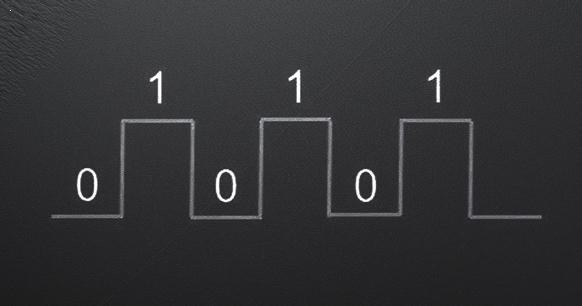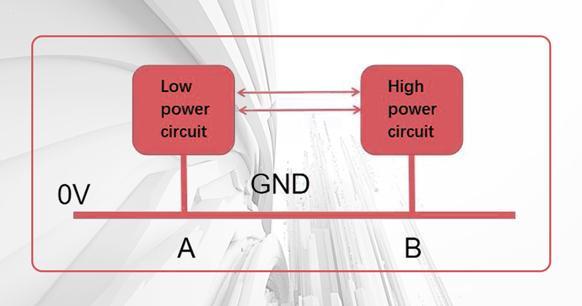
Mastering GND in Circuits: Types and Best Practices
In this article, you will be introduced to the classification of GND and its working principle. GND is short for ground, representing the ground wire or the 0 wire. It's important to note that this ground is not a physical one, but rather an assumed reference point for practical applications. In terms of power supply, it serves as the negative pole of a power supply.
What is Ground?
Catalog
- Classification of GND
1 Analog ground AGND
2 Digital ground DGND
3 Power ground PGND
4 Power supply GND
5 AC ground CGND
6 Earth ground EGND
- Working principle of GND
What does GND mean in a circuit? In the PCB layout routing process, engineers encounter various challenges when handling GND. Why is that? During the circuit design stage, engineers introduce different GND grounds as 0V reference points for different functional circuits in order to reduce mutual interference between circuits and form different current loops.
Classification of GND:
1. Analog ground (AGND)
AGND is mainly used in the analog circuit part, such as the ADC acquisition circuit of analog sensors, operational amplification proportional circuits, etc. These analog circuits are susceptible to interference from high currents produced by other circuits due to their weak and analog signals. Failure to distinguish these grounds can result in large voltage drops and distorted signals.
2. Digital ground (DGND)
DGND, relative to AGND, is primarily used in digital circuits such as key detection circuits, USB communication circuits, microcontroller circuits, etc.
Digital circuits operate with discrete open light signals using only the numbers "0" and "1" for distinction.

During the transition from the digital "0" voltage to the digital "1" voltage, or vice versa, there is a change in voltage. According to Maxwell's electromagnetic theory, this change generates a magnetic field around the current, which in turn emits EMC radiation to other circuits.
To minimize the impact of EMC radiation on the circuit, it is necessary to use a separate digital ground (DGND) to effectively isolate other circuits.
3 Power ground (PGND)
Both analog ground (AGND) and digital ground (DGND) are low power circuits. However, in high-power circuits such as motor drive circuits and solenoid valve drive circuits, a separate reference ground called power ground PGND is used.
High-power circuits typically involve relatively large currents. As a result, these large currents can potentially cause ground offsets between different function circuits.
Once there is a ground shift in the circuit, the original 5V voltage may not remain at 5V but decrease to 4V. This is because the 5V voltage is referenced to the GND ground line, which is at 0V. If the ground offset causes the GND line to rise from 0V to 1V, then the previous 5V (5V-0V=5V) voltage becomes the current 4V (5v-1v=4v).
4 Power supply GND
Analog ground AGND, digital ground DGND, and power ground PGND are all classified as DC ground GND. These different types of grounds ultimately function as a unified reference point for all circuits at 0 volts; this reference point is called power ground GND.
The required voltage and current for all circuits come from the power supply. Therefore, it's essential that all types of grounds – whether analog AGDN, digital DGDN or power PGDN – be connected with Power Supply Ground (GND) eventually.
5. AC ground CGND
The AC ground, CGND, is commonly utilized in circuit projects involving AC power, such as AC to DC power circuits.
An AC-DC power supply circuit is typically divided into two parts. The front stage of the circuit handles the AC portion while the back stage deals with the DC part, resulting in the creation of two grounds; one for the AC and another for the DC.
The purpose of the AC ground is to serve as the 0V reference point for the AC section of the circuit, while the DC ground serves as its counterpart for the DC portion. To unify a common ground GND in a circuit, engineers will often connect these two grounds through a coupling capacitor or inductor.
6. Earth ground EGND
As it is widely known among engineers responsible for developing and designing circuit project solutions, it's important to consider that voltages exceeding 36V can pose dangers to human safety. In order to enhance safety measures within high-voltage and high-current projects—such as those involved with household appliances like electric fans, refrigerators, and televisions—engineers generally employ earth ground EGND protection. The picture below illustrates an example of a socket equipped with this protective feature.
The use of 220V AC only requires the fire wire and zero wire. So, why do household appliance sockets have 3 terminals?
The three terminals in the socket are utilized for the 220V fire and zero wires, while the third terminal - earth ground (EGND) - serves a protective purpose.
EGND is solely connected to our Earth to provide high-voltage protection, but it does not participate in the project circuit function. Therefore, it's important to note that the meaning of EGND and other types of GND circuits are significantly different.
Working principle of GND
Why are there so many distinctions within the GND ground, and why is a simple circuit problem made to be so complicated?
Is it really necessary to introduce so many subdivisions of the GND ground function?
Typically, engineers simply refer to this type of GND ground wire design as GND. There is no differentiation in the schematic design process, which makes it difficult to effectively identify the GND ground wires for different circuit functions during PCB layout. They connect all GND ground wires together directly and simply.
While this may seem straightforward, it can lead to a series of problems:
1. Signal crosstalk
When different functions of the ground GND are connected together directly, high-power circuits passing through the ground GND will affect the 0V reference point (G)Gnd of low-power circuits, resulting in crosstalk between signals from different circuits.
2. Signal accuracy
Signal accuracy is an essential aspect for analog circuits. Without accuracy, analog circuits lose their original functional significance.
The CGnd (ground) of AC power supply is a sine wave that fluctuates periodically. Its voltage also fluctuates up and down rather than remaining constant at 0V like DC ground (G)Gnd. Connecting the grounds (G)Gnd of different circuits will cause cyclically changing AC ground CGnd to modify AGnd (analog circuit's grounding), affecting the voltage accuracy value of analog signals.
3. EMC experiment
The strength or weakness of external electromagnetic radiation interference corresponds with signal strength or weakness - weaker signals lead to weaker EMC while stronger signals result in stronger EMC from external interference.
Connecting grounds(G)Gnds from different circuits results in strong signal interference with weak signal grounds(G)Gnds leading weak signal EMC becoming a source for strong external electromagnetic radiation(EMR). This increases difficulty when testing circuit EMC compliance.
4. Circuit reliability
The strength of a circuit's ability to operate independently is directly related to the simplicity of its signal connection. A circuit with fewer signal connection parts operates more independently, while one with more parts operates less independently.
When there is no intersection between two circuit systems A and B, it is clear that the function of circuit system A cannot impact the normal operation of circuit system B. Similarly, the function of circuit system B cannot affect the normal operation of circuit system A.
If the ground wires of different functions in a circuit system are connected together, it creates an additional source of interference between circuits, ultimately reducing the reliability of their operation.




